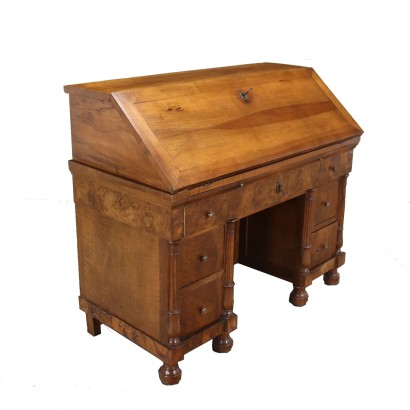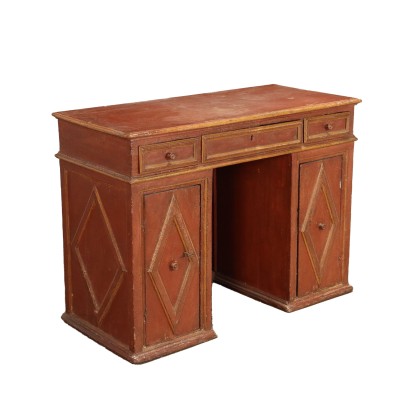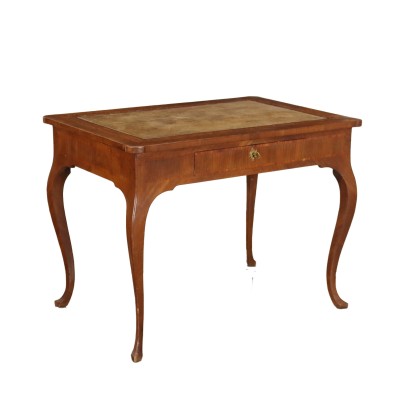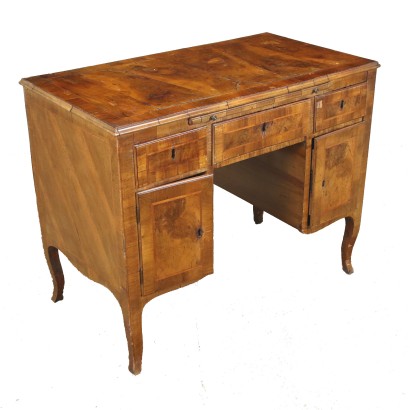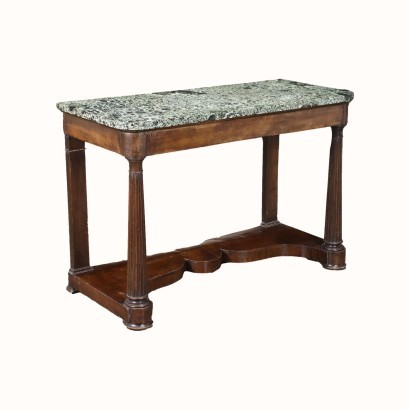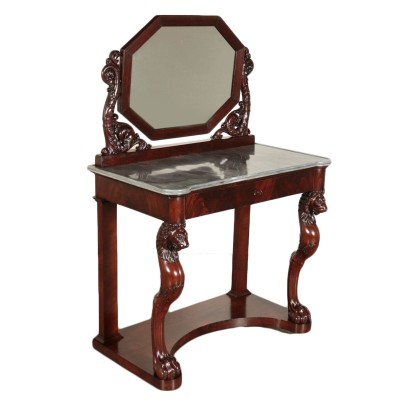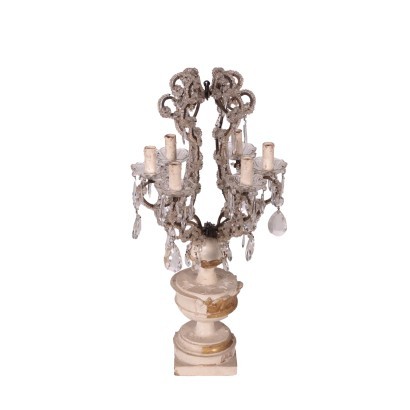Folding Desk Walnut Italy XIX Century - Central Italy Second Fourth XIXth Century
Features
Central Italy Second Fourth XIXth Century
Age: 19th Century / 1801 - 1900
Origin: Central Italy
Main essence: Cherry , Walnut , Poplar
Description
Drop-leaf desk supported by feet of which the rear plinth and the front turned ones, on the front there are two pairs of drawers on the sides, framed between two semi-columns, has a drawer in the band surmounted by a drawer to support the flap opening door and concealing cabinet with compartments and drawers painted with turreted landscapes and cities. In walnut, the cabinet is in cherry, interior in poplar.
Product Condition:
Product that due to age and wear requires restoration and resumption of polishing.
Dimensions (cm):
Height: 109
Width: 123,5
Depth: 61,5
Additional Information
Age: 19th Century / 1801 - 1900
19th Century / 1801 - 1900Main essence:
Cherry
Obtained from prunus cerasus , a plant of oriental origin, it is a hard wood with a light and delicate color, with a reddish vein. Due to its diffusion and availability it was used in Europe in popular furniture. In cabinet making, in the seventeenth century, it was widely used in France and England for inlay work. In Italy it was very successful in Lucca. It was also very popular in the United States for the manufacture, from the late 1600s, of commonly used furniture.The dictionary of antiques: Eclecticism
Classic Monday: a sofa from the 1800s example of eclecticism



